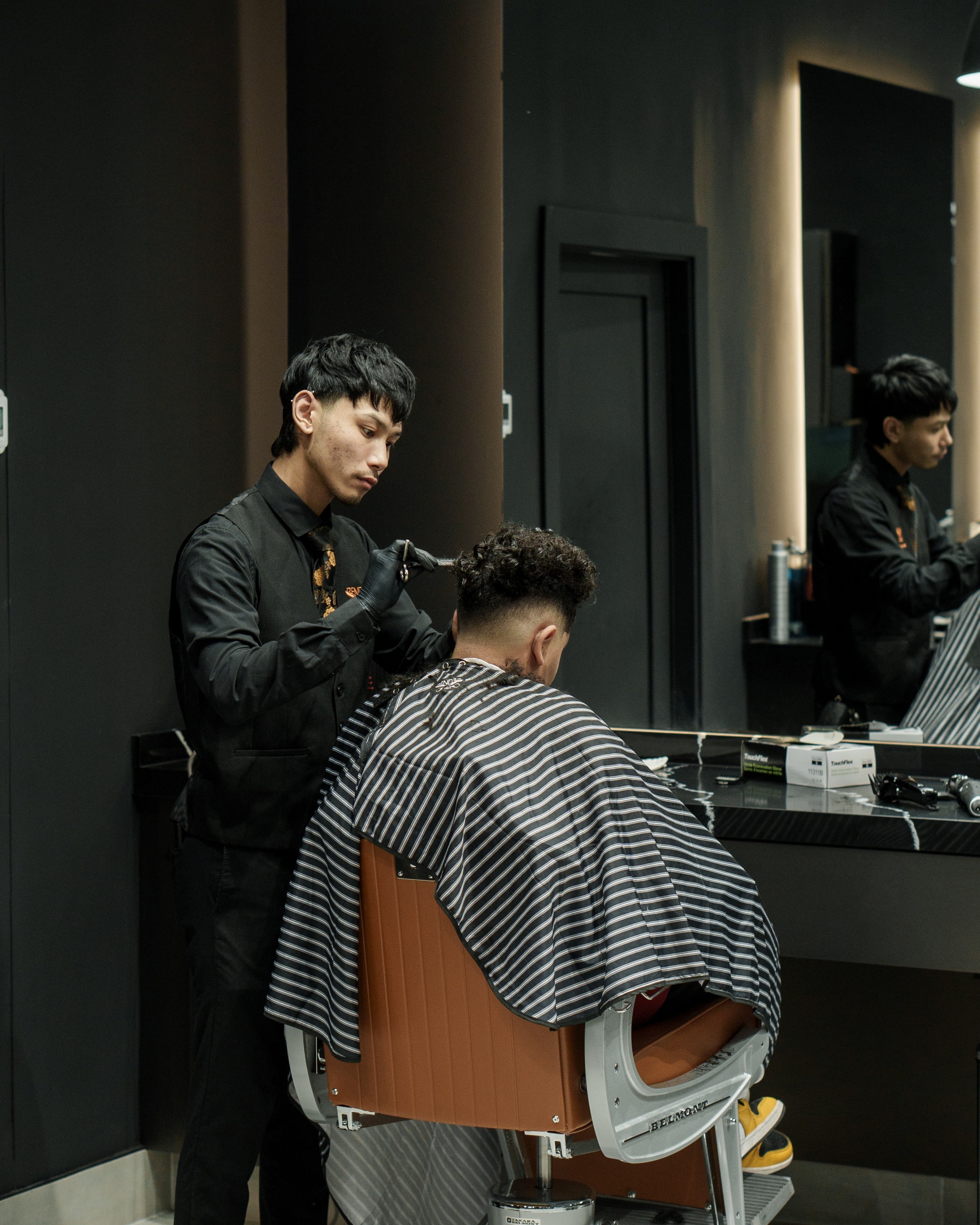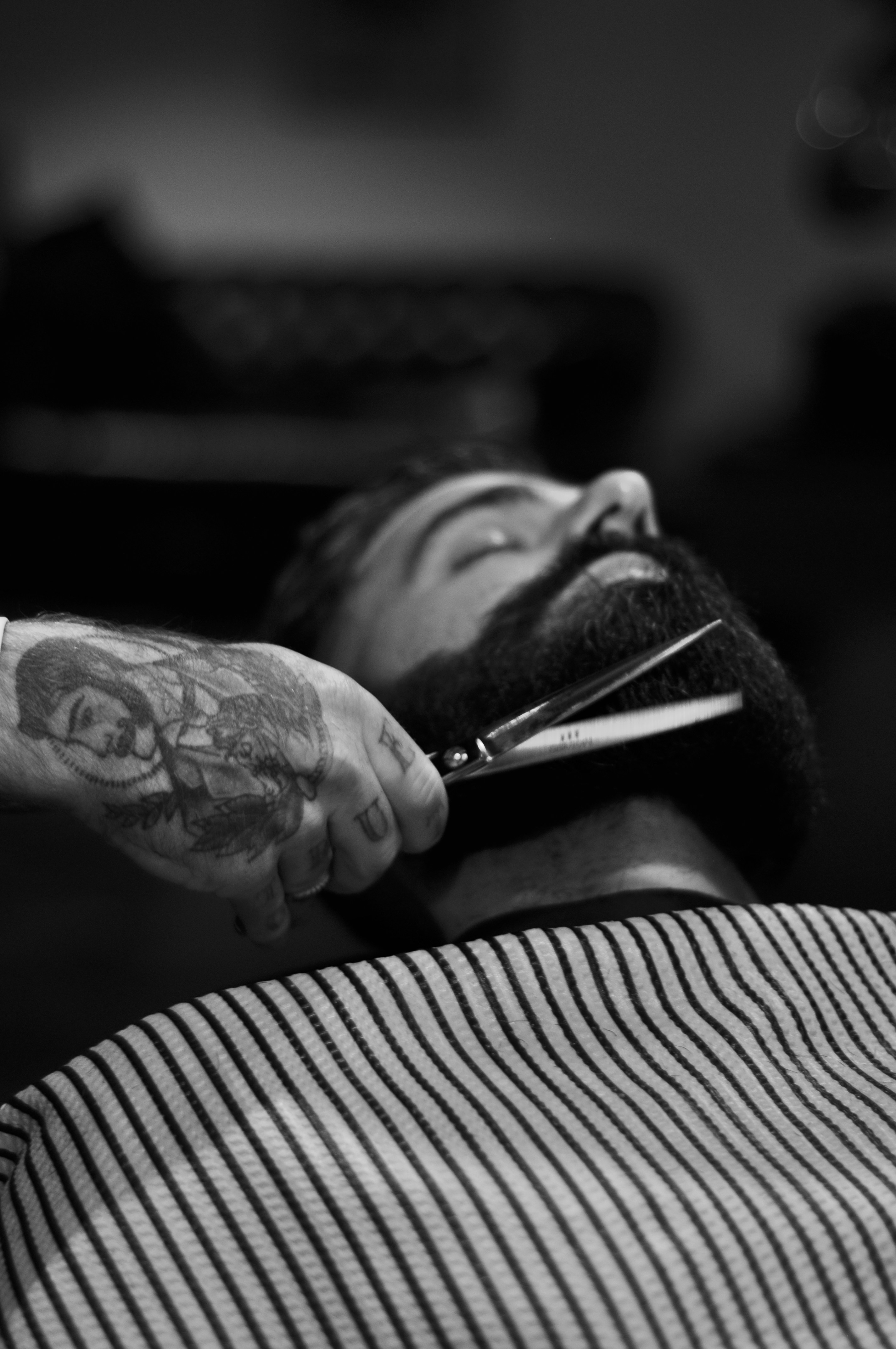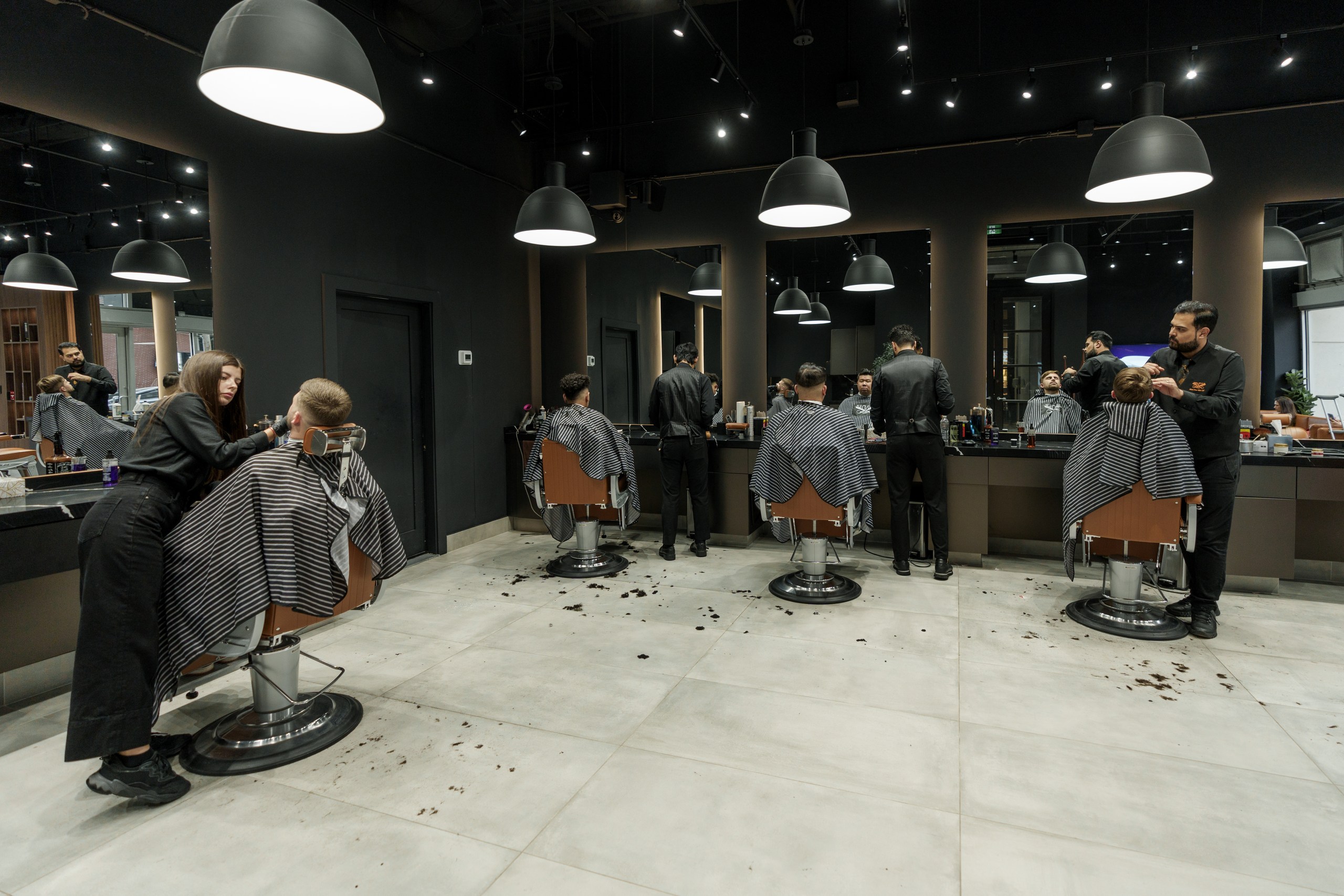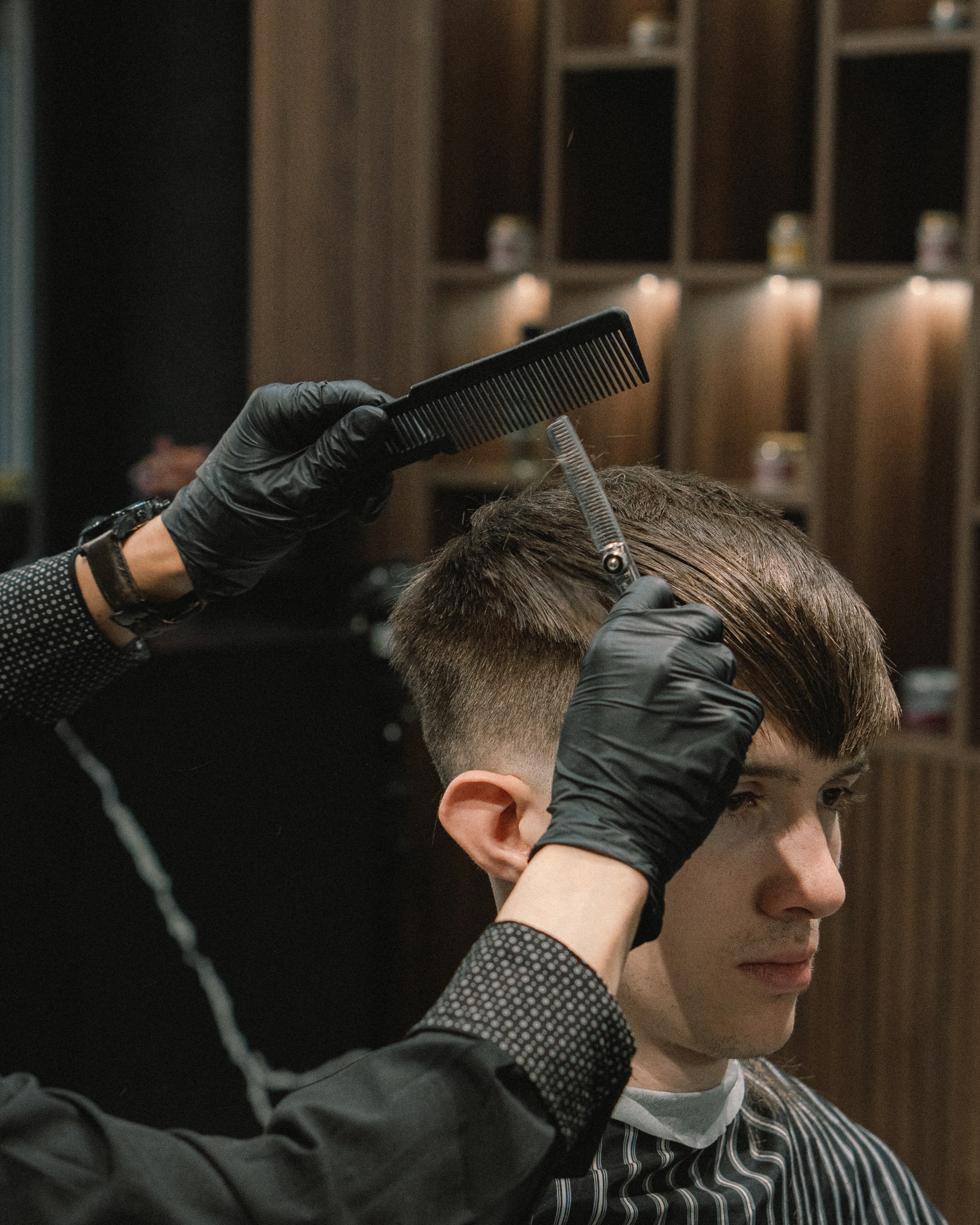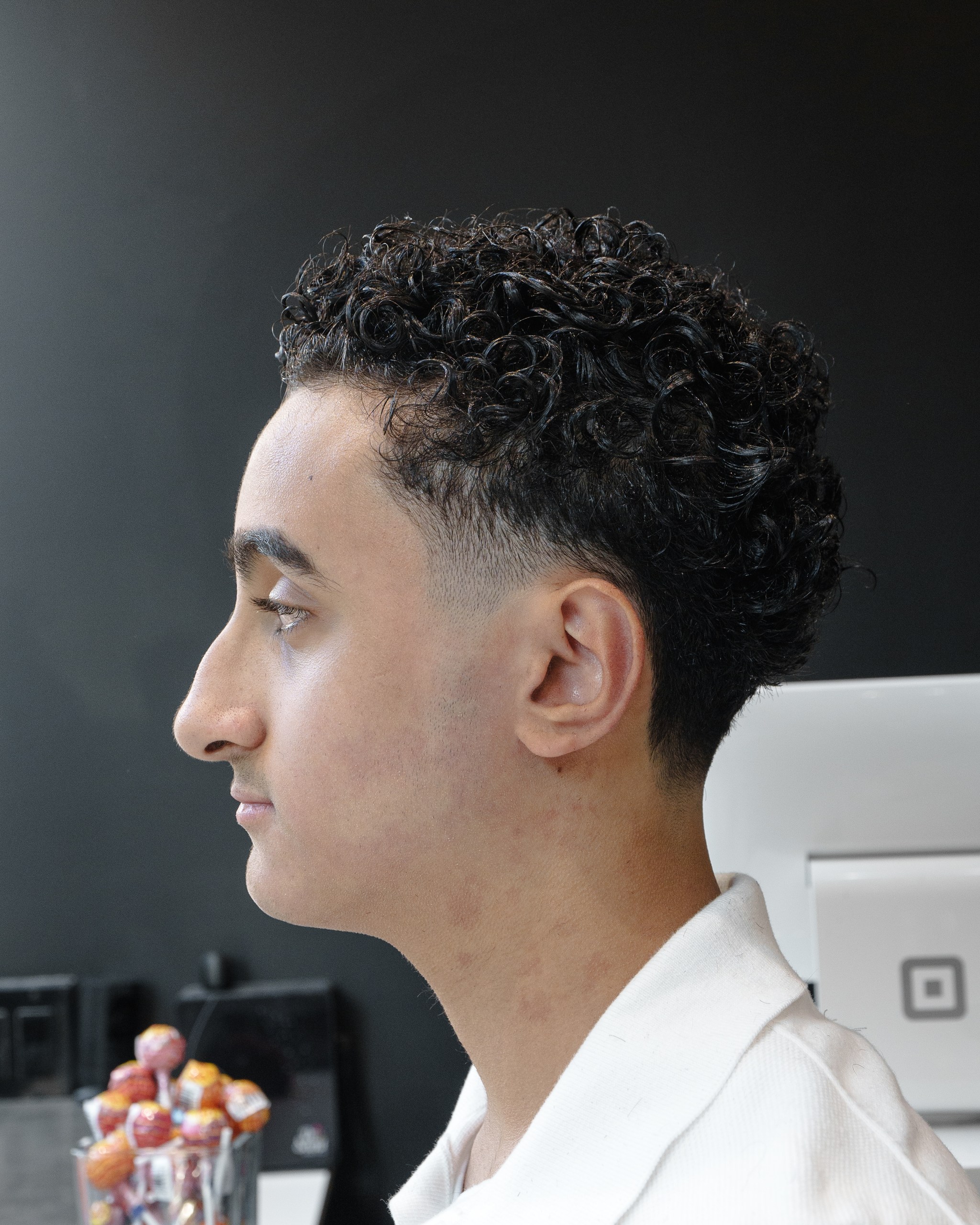You wake up, shower, style your hair perfectly, and head out the door looking sharp. By lunch, there's a section sticking up at weird angles, making you look like you just rolled out of bed. You try to smooth it down, but it springs right back up like some kind of hair rebellion.
Sound familiar? That stubborn piece of hair isn't being difficult just to annoy you – it's following genetic programming that's been locked in since birth. At Rendezvous Barbers, we see guys walk in frustrated every day, convinced their hair is defective or that they're using the wrong products. The truth is simpler: they're fighting their natural growth patterns instead of working with them.
Understanding your cowlicks and growth direction isn't just barbershop trivia – it's the difference between hair that cooperates all day and hair that makes you look disheveled by noon.
What Cowlicks Actually Are (And Why You Have Them)
A cowlick isn't a hair problem – it's a growth pattern. Before you were even born, your hair follicles were programmed to grow in specific directions. Think of it like a permanent part in your hair that nature decided for you, except it's not always where you'd choose to put it.
The name comes from the way a cow's tongue creates swirled patterns when it licks a calf's fur, which is exactly what your hair does naturally. Each follicle has a predetermined angle and direction, creating swirls, whorls, and stubborn sections that refuse to lay flat no matter what you do to them.
Single crown patterns: Most guys have one main swirl at the crown of their head where hair grows in a circular pattern. This is your dominant growth center, and everything else flows from here.
Double crown patterns: Some unlucky guys have two swirls, usually close together at the crown. This creates competing growth directions that make styling significantly more challenging.
Multiple patterns: A few guys have several smaller cowlicks scattered around their head. These create the most complex styling challenges but also the most opportunities for creative cutting solutions.
Here's the key insight: cowlicks aren't flaws to be fixed – they're natural architecture that smart cutting can work with instead of against.
The Science Behind Stubborn Hair
Your hair follicles don't just grow straight up out of your scalp. Each one has a specific angle and direction programmed into it genetically. This creates natural flow patterns across your entire head, with some areas wanting to grow forward, others backward, and some in circular swirls.
Follicle angle programming: During fetal development, your hair follicles form with predetermined angles. Once set, these angles never change. This is why the same cowlick that drove your parents crazy when you were five is still causing problems at thirty-five.
Growth strength hierarchy: Not all growth directions are created equal. Your dominant patterns are stronger than minor ones, which is why some areas always win the styling battle while others give up easily.
Density variations: Cowlick areas often have different hair density than surrounding areas. Sometimes they're thicker (making the cowlick more obvious), sometimes thinner (making the scalp more visible), both of which affect how cuts should be approached.
Seasonal changes: While the direction never changes, the strength of cowlick patterns can vary with humidity, temperature, and even stress levels. This is why your hair might behave differently in summer versus winter.
Common Cowlick Locations and Their Challenges
Understanding where cowlicks typically occur helps explain why certain areas of your hair are more difficult to manage.
Crown cowlicks: The most common type, located at the back-top of your head. These create circular growth patterns that can make hair stick up or create visible spiral patterns. Crown cowlicks are why some guys can never get their hair to lay flat in the back, no matter how much product they use.
Hairline cowlicks: Located along your forehead or temples, these cause hair to grow in unexpected directions along your hairline. They're responsible for those stubborn pieces that won't stay slicked back or that create uneven bang lines.
Nape cowlicks: Found at the back of your neck, these affect how hair grows at your neckline. They can cause hair to stick out at odd angles or create difficulty achieving clean neckline shapes.
Side cowlicks: Located behind your ears or along the sides of your head, these can cause hair to flip out or refuse to stay styled in certain directions.
Forehead cowlicks: The most frustrating type for many guys, these cause hair to grow directly forward or in competing directions right at your hairline, making it impossible to achieve certain slicked-back or side-parted styles.
Each location requires different cutting and styling strategies, which is why generic hair advice rarely works for guys with prominent cowlicks.
How Professional Barbers Map Growth Patterns
Before a skilled barber makes a single cut, they're reading your hair like a topographical map. This assessment determines everything about how your cut will be approached.
The initial observation: We start by looking at your hair in its natural, unstyled state. This means no product, minimal brushing, just seeing how your hair wants to fall naturally. Wet hair can hide growth patterns, so this dry assessment is crucial.
Finger mapping: Running fingers through hair in different directions reveals resistance patterns. Areas that feel smooth when brushed one way but rough when brushed the opposite way indicate strong directional growth.
Growth strength testing: Not all cowlicks are created equal. Some are stubborn opponents that will fight any attempt to change direction. Others are more flexible and can be persuaded with the right cutting techniques.
Pattern intersection analysis: The most challenging areas are where different growth patterns meet. These intersection points often determine what styles will work and which ones will fight you every day.
Seasonal consideration: Experienced barbers ask about how your hair behaves in different weather conditions, since humidity and temperature can amplify or minimize cowlick effects.
This mapping process takes under two minutes but prevents months of frustration with styles that were never going to work with your natural patterns.
Strategic Cutting for Different Cowlick Types
Once growth patterns are mapped, the cutting strategy needs to accommodate these natural tendencies rather than fight against them.
Working with crown swirls: Instead of trying to force crown hair to lay flat against its natural direction, smart cutting uses graduated lengths that allow the swirl to exist while minimizing its visual impact. Sometimes this means leaving certain areas slightly longer so they can curve naturally without sticking straight up.
Embracing directional flow: Hair that naturally wants to grow forward can be cut to enhance that movement rather than fighting it. This creates more natural-looking styles that require less product and daily maintenance.
Strategic layering: Layered cuts can disguise cowlick patterns by creating intentional texture that makes natural swirls look like deliberate styling choices rather than uncontrollable hair behavior.
Length adjustments: Sometimes the solution is as simple as adjusting length in cowlick areas. Hair that's too short will stick straight up, while hair that's too long will lay flat but look uneven. Finding the sweet spot requires understanding each cowlick's specific behavior.
Blending techniques: The areas around cowlicks often need special attention to create smooth transitions between different growth directions. This prevents the choppy, uneven appearance that happens when cowlicks are ignored during cutting.
Toronto's Climate and Cowlick Behavior
Living in Toronto adds another layer of complexity to cowlick management, since our extreme seasonal changes affect how pronounced growth patterns become.
Summer humidity amplification: Toronto's humid summers can make cowlicks more pronounced as hair absorbs moisture from the air and becomes more elastic. Hair that behaves reasonably in dry conditions might become completely unmanageable when humidity hits 70-80%.
Winter static electricity: Our dry winters create static electricity that can make cowlick areas even more rebellious. Hair that wants to stick up naturally gets an extra boost from static charge, making styling more difficult.
Seasonal product adjustments: Products that control cowlicks in January might be too heavy for July, while summer-weight products might not provide enough hold during winter static season.
Hat impact: Toronto's weather means lots of hat wearing, which can temporarily flatten some cowlicks while creating new temporary patterns in others. Understanding how your hair recovers from hat compression helps with daily styling strategies.
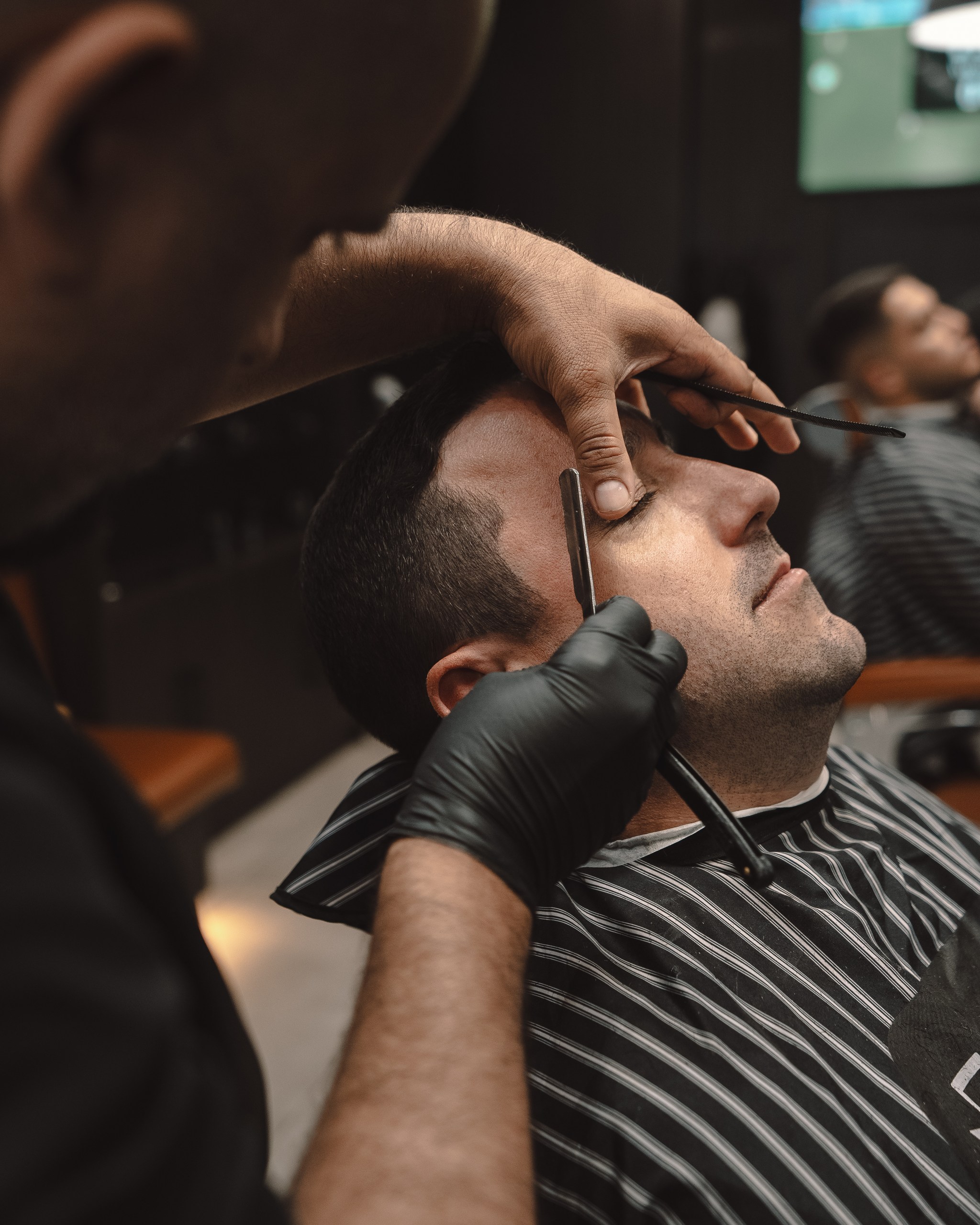
The Home Styling Guide
Understanding your cowlicks helps set realistic expectations for daily styling and prevents the frustration that comes from trying to achieve impossible results.
Morning routine adaptation: Instead of fighting your natural patterns every morning, develop routines that work with them. This might mean styling certain sections in their preferred direction rather than forcing everything into the same pattern.
Product selection strategy: Different cowlick types respond to different products. Crown cowlicks might need stronger hold products, while hairline cowlicks might respond better to lightweight creams that provide control without weight.
Time management: Styles that work with your natural patterns take less time to achieve and maintain throughout the day. Fighting against strong cowlicks can add 10-15 minutes to your morning routine with worse results.
Realistic expectations: Some days your hair will cooperate better than others, and that's normal. Having backup styling strategies for difficult hair days prevents morning frustration.
When to give up: Recognizing when your hair needs professional attention rather than continuing to fight impossible styling battles at home saves time and prevents damage from over-styling.
Common Cowlick Mistakes That Make Things Worse
Most guys unknowingly make their cowlick problems worse by using strategies that fight against natural growth patterns.
The over-product trap: Using more and stronger products to force cowlicks into submission usually backfires. Heavy products can weigh hair down in some areas while still not controlling the stubborn sections, creating an uneven, unnatural appearance.
Fighting with heat: Blow-drying against natural growth patterns might work temporarily, but the results rarely last and can damage hair over time. Heat styling should enhance natural patterns, not fight against them.
Wrong cut choices: Choosing styles based on trends or preferences without considering natural growth patterns guarantees daily styling struggles. The best cut for you might not be the most popular cut of the moment.
Ignoring professional advice: Barbers who take time to explain why certain styles won't work with your growth patterns aren't being difficult – they're preventing you from months of frustration with unmanageable cuts.
The buzz cut escape: Some guys think eliminating length will eliminate cowlick problems, but very short cuts often make cowlick patterns more obvious, not less. The right length varies by individual pattern.
The Long-Term Approach
Managing cowlicks successfully requires thinking beyond individual haircuts to develop long-term strategies that work with your hair's natural evolution.
Growth planning: Understanding how your hair grows and changes over time helps with planning cuts that will look good at different stages of growth, not just immediately after cutting.
Skill development: Learning basic techniques for working with your specific patterns makes daily styling more efficient and effective.
Product experimentation: Finding products that work with your particular cowlick patterns might take time, but the investment pays off in easier daily maintenance.
Professional maintenance: Regular professional maintenance prevents minor cowlick issues from becoming major styling problems.
Conclusion
Ready to stop fighting your natural growth patterns and start working with them? Visit us at one of our five locations in Toronto and let us map your unique cowlick patterns to create a cut that works with your hair's natural tendencies instead of against them.
Book your appointment today. We help you work with what nature gave you, not against it.


